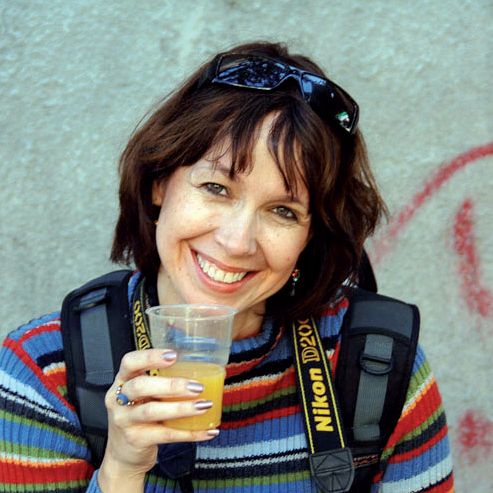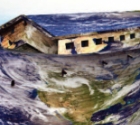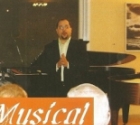
Michal Yehezkel
To take a photograph in the digital age you still frame your picture and squeeze the shutter, capturing a split second of reality forever. Then you can tap in to “Photoshop” and tinker: whitening teeth, lightening skin and turning every family member into a supermodel. Today, when every six-year-old can snap photos on their third generation cell-phones, what is the state of the art of photography?
For Kfar-Saba based Michal Yehezkel, 43, photography is more than an art form; it is a life-line. Israeli-born Yehezkel grew up in New York and returned to Israel on her own at the age of 18 when she enrolled at the Hebrew University in Jerusalem.
“I’ve always been passionate about photography, but four years ago, after my third child was born, I decided to study photography professionally,” she explains. Life, however, got in the way. On the very day of her appointment to the admissions department at Beit Berl College of Art, Yehezkel’s husband, Micha, was diagnosed with brain cancer. "My whole world turned around over night,” she says. “He was my soulmate, we had wonderful kids … I was full of joie de vivre … and suddenly this.”
Michal’s increasing mastery of her art turned out to be her salvation as she chronicled her husband’s heroic battle with cancer. “I am usually a very quiet person,” she explains, “and I spoke out through the portraits that I took of Micha. Photography became my outlet. It was my catharsis, my poetry which expressed both my pain and my great love for him. Each click of the shutter was like a knife stabbing into my heart, but it needed to be done. It helped me unite with and part from him.”
When he died, almost three years ago, at the age of 47, Yehezkel felt lost and stuck in deep grief. “I couldn’t stop crying,” she recalls. “I realized I had to do something drastic to get myself better.”
It was at that point that some friends invited her to participate in a photographic tour of India. “My late husband was born in India,” she says, “and he came to Israel when he was ten. He always dreamt of going home for a visit, and I decided to do it for him, or with him – in spirit.”
The next step was to acquire a tourist visa. “Business or pleasure?” the clerk at the Indian Embassy enquired. “Neither,” replied Yehezkel. “I’m going to the land where my love was born; I’m going for healing. Next time, I hope it’ll be for pleasure.”
The trip to India became a personal voyage of discovery for Michal, who shot about 5,000 pictures with her Nikon D200. Her photographs are characterized by powerful contrasts of light and darkness, happiness and sadness, past and future. The photo entitled "Soul Mates" illustrates a man and a woman strolling down a lane as their silhouettes unite to become one body. The photo entitled "The Empty Chair" shows a family seated round a colorful table with a strand of marigolds in the shape of a heart, while opposite them stands an empty chair. "The Child That You Were" captures a ten-year-old child, gazing down somberly at a marigold, a flower which symbolizes grief. "Early Morning Prayer" displays a mysterious figure in grey opposite the Golden Temple at Amritsar just at the break of dawn.
Michal, who coins herself “auraflora” considers herself an “eternal optimist.” “I am always in search of the aura and flora in this world, despite the sadness, despite the darkness. With my photography, I search for the same things which I search for in life, the light and the color. I am guided by the words of Helen Keller: Keep your face to the sunshine and you cannot see a shadow.”
Her work has been exhibited in Tel Aviv and Jerusalem, and has also been beamed on five separate occasions onto a huge Kodak screen in Times Square, New York for 24 hours as “Picture of the Day.”
Her latest exhibition, SPIRITS, will be displayed at the Jerusalem Theater until 12 December 2007 to mark the third year of Micha's passing. All proceeds from sales of the photos will go to The Tel Hashomer Hospice where Micha spent the last three weeks of his life.
For Jenny Tuil, 44, whose work was recently shown at the Jerusalem Theater, photography grew out of her love of creativity. An English teacher by profession, she has always loved making her lessons come to life. “When I taught ‘Charlie and the Chocolate Factory’ we made chocolate in class, and built a factory – and then ate it! I love things like baking and decorating, and creating theme-based parties and Jewish holidays,” she explains, and photography was another creative outlet. Tuil immigrated alone from South Africa at the age of nineteen, where she met her French husband, Teddy, when she was a student at the Hebrew University in Jerusalem. “As our four children grew up I have always documented all our family functions in hundreds of photographs,” she adds. “I enjoy being behind the lens; I never feel as if I’m missing out by being behind my camera.”
Tuil, who has recently traded in her old-fashioned Canon for a digital one, has now combined her love of children and creativity by studying for an MA in photo-therapy. This field is based on the belief that the photographic image and the act of taking a photo have the potential to enable any individual to undergo change as they express their desires and inner selves through their creative work. “As one frames the picture and captures the details, the subject comes alive,” explains Tuil. Photo-therapy encourages observation and analysis and stimulates inventive ways of thinking. Tuil hopes to combine her love of children and creativity by working in photo-therapy in children’s hospital wards.
Tuil, who lives in Kochav Yair and travels around Israel for her work, captures the intricacies of natural landscapes and man-made buildings in mosaics and paintings as well as photographs. She uses her camera like a paintbrush, and her work brims with vibrancy and colour. Her focus is on a world bright with intriguing beauty, and on how to see a fresh angle in the mundane. She transforms regular day-to-day objects like chairs and gates and lamp posts into splendid events, forcing the viewers to reevaluate their own perceptions. Tuil uses natural light and no artificial manipulations: do not look for super-white teeth in her compositions.
-1372404808.jpg) Freda Keet at ESRA Tel Aviv
Freda Keet at ESRA Tel Aviv-1372524003.jpg) the key question
the key question -1372523803.jpg) Volunteering this year- English for Schools
Volunteering this year- English for Schools Art from the Heart
Art from the Heart Jewish Art Returns to Jerusalem
Jewish Art Returns to Jerusalem Musical Treats
Musical Treats Pamela Peled
Pamela Peled